Related Research Articles

Frédéric François Chopin was a Polish composer and virtuoso pianist of the Romantic period, who wrote primarily for solo piano. He has maintained worldwide renown as a leading musician of his era, one whose "poetic genius was based on a professional technique that was without equal in his generation".
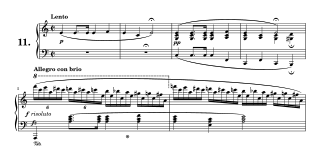
An étude or study is an instrumental musical composition, usually short, designed to provide practice material for perfecting a particular musical skill. The tradition of writing études emerged in the early 19th century with the rapidly growing popularity of the piano. Of the vast number of études from that era some are still used as teaching material, and a few, by major composers such as Frédéric Chopin, Franz Liszt and Claude Debussy, achieved a place in today's concert repertory. Études written in the 20th century include those related to traditional ones and those that require wholly unorthodox technique.
This article is about music-related events in 1829.
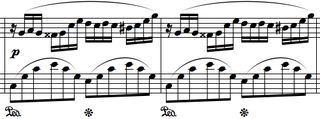
Frédéric Chopin's Fantaisie-Impromptu in C♯ minor, Op. posth. 66, WN 46 is a solo piano composition. It was composed in 1834 and published posthumously in 1855 despite Chopin's instruction that none of his unpublished manuscripts be published. The Fantaisie-Impromptu is one of Chopin's most frequently performed and popular compositions.

Ludwig van Beethoven's Concerto for Violin, Cello, and Piano in C major, Op. 56, commonly known as the Triple Concerto, was composed in 1803 and published in 1804 by Breitkopf & Härtel. The choice of the three solo instruments effectively makes this a concerto for piano trio, and it is the only concerto Beethoven ever completed for more than one solo instrument, and also being the only concerto he wrote for cello. A typical performance takes approximately thirty-seven minutes.

The Polonaise in A♭ major, Op. 53 for solo piano, was written by Frédéric Chopin in 1842. This composition is one of Chopin's most admired compositions and has long been a favorite of the romantic piano repertoire. Pianist Arthur Rubinstein once called it "the composition which is the closest to my heart." The piece requires exceptional piano skills and great virtuosity to be interpreted at a high degree of proficiency. It is also very physically demanding, and according to his student Adolphe Gutmann, Chopin played it more gently than most performers. The polonaise was dedicated to Auguste Léo, a German banker and friend of Chopin.
Steven Honigberg is an American cellist. The son of pianist Carol Honigberg, Steven is a member of the National Symphony Orchestra and the Potomac String Quartet, and solos frequently; he is also known as a well-reviewed performer from David Ott's premier of Concerto for Two Cellos. From 1994-2002, Honigberg served as chamber music series director at the United States Holocaust Memorial Museum. Forty concerts and 4 CDs entitled "Darkness and Light," a CD of Ernst Toch's (1887–1964) cello compositions and a CD of Erich Wolfgang Korngold's (1897–1957) chamber music were produced under his artistry and leadership.
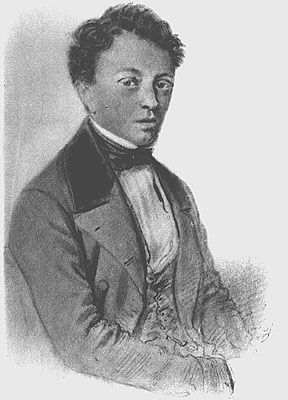
Auguste-Joseph Franchomme was a French cellist and composer. In addition to his work in Paris, he collaborated with Spanish cellist Víctor Mirecki Larramat and Belgian cellist Adrien-François Servais in founding what is considered the Spanish school of cellists, influencing future generations there. For his many contributions to music, he was decorated with the French Légion d'honneur in 1884.
The Ballade No. 2 in F major, Op. 38 is a ballade for solo piano by Frédéric Chopin, completed in 1839. A typical performance lasts six to eight minutes.
The Cello Sonata in G minor, Op. 65, was written by Frédéric Chopin in 1846-1847. It is one of only nine works of Chopin published during his lifetime that were written for instruments other than piano. Chopin composed four sonatas, the other three being piano sonatas. The cello sonata was the last of Chopin's works to be published in his lifetime.
Andante spianato et grande polonaise brillante in E-flat major, Op. 22, was composed by Frédéric Chopin between 1830 and 1834. The Grande polonaise brillante in E-flat, set for piano and orchestra, was written first, in 1830–31. In 1834, Chopin wrote an Andante spianato in G, for piano solo, which he added to the start of the piece, and joined the two parts with a fanfare-like sequence. The combined work was published in 1836, and was dedicated to Madame d'Este.
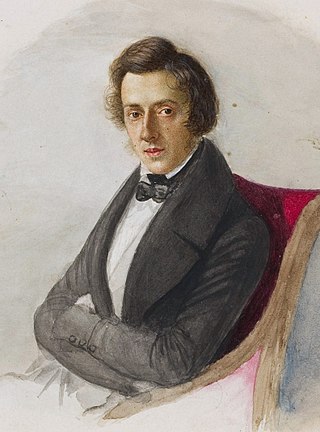
The Piano Trio, Op. 8, is a composition in G minor for piano, violin and cello, by Frédéric Chopin, written in 1828 or 1829, and published in 1829, dedicated to Antoni Radziwiłł. It is a piece of musical juvenilia, written by Chopin when he was still young, in his early years in Poland.
Most of Frédéric Chopin's polonaises were written for solo piano. He wrote his first polonaise in 1817, when he was 7; his last was the Polonaise-Fantaisie of 1846, three years before his death. Among the best known polonaises are the "Military" Polonaise in A, Op. 40, No. 1, and the "Heroic" Polonaise in A♭, Op. 53.
The Grand Duo concertant in E major, B. 70 is a composition for piano and cello, written jointly by Frédéric Chopin and Auguste Franchomme. It was written in 1832 and published in 1833.

Frédéric Chopin's Variations on "Là ci darem la mano" for piano and orchestra, Op. 2, was written in 1827, when he was aged 17. "Là ci darem la mano" is a duet sung by Don Giovanni and Zerlina in act 1 of Mozart's 1787 opera Don Giovanni. In a manuscript of this composition, dedicated to his schoolfriend Tytus Woyciechowski, the latter replied on the title page in written form „J’accepte avec plaisir“. Chopin's work inspired Robert Schumann's famous exclamation: "Hats off, gentlemen, a genius." The work is often recorded and played in concert. A typical performance lasts from 17 to 19 minutes. One autograph of the version for solo piano is held by the Austrian National Library.

Joseph Merk was a noted Austrian cellist, often described as one of the most influential of the first half of the 19th century. He also wrote a number of compositions for the cello.

The Journey is the second studio album by Tina Guo. It was released on December 12, 2011. The album featured the Budapest Symphony Orchestra and the composers from Nuno Malo, Frédéric Chopin and Astor Piazzolla.
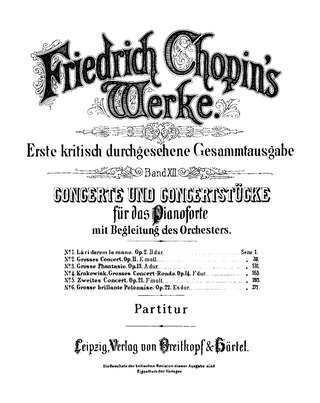
Frédéric Chopin's compositions for piano and orchestra originated from the late 1820s to the early 1830s, and comprise three concert pieces he composed 1827–1828, while a student at the Central School of Music in Warsaw, two piano concertos, completed and premièred between finishing his studies and leaving Poland, and later drafts, resulting in two more published works. Among these, and the other works in the brilliant style which Chopin composed in this period, the concertos are the most accomplished ones.
References
- Notes
- ↑ Nicholas 2010 , p. 4
- ↑ Johnson 1908 , p. 64
- References
- Johnson, G. C. Ashton (1908). A Handbook to Chopin's Works. London: William Reeves.
- Nicholas, Jeremy (2010). Chopin: Chamber Music (PDF) (CD). Hyperion Records. CDH55384.
- Rezaei, Ramin (2010). Frederic Chopin's Chamber Music and Polish Songs (PDF) (B.Mus). Lahti University of Applied Sciences . Retrieved 2016-07-11.